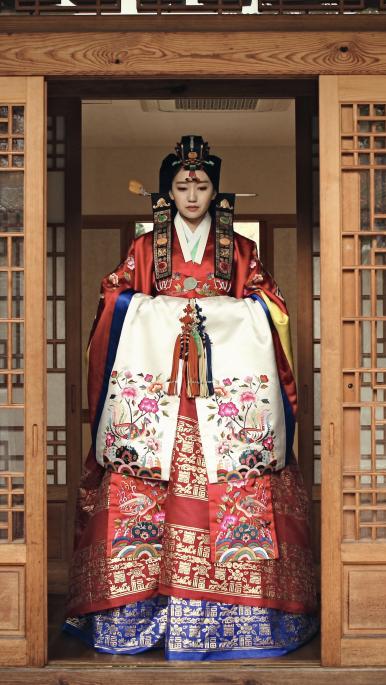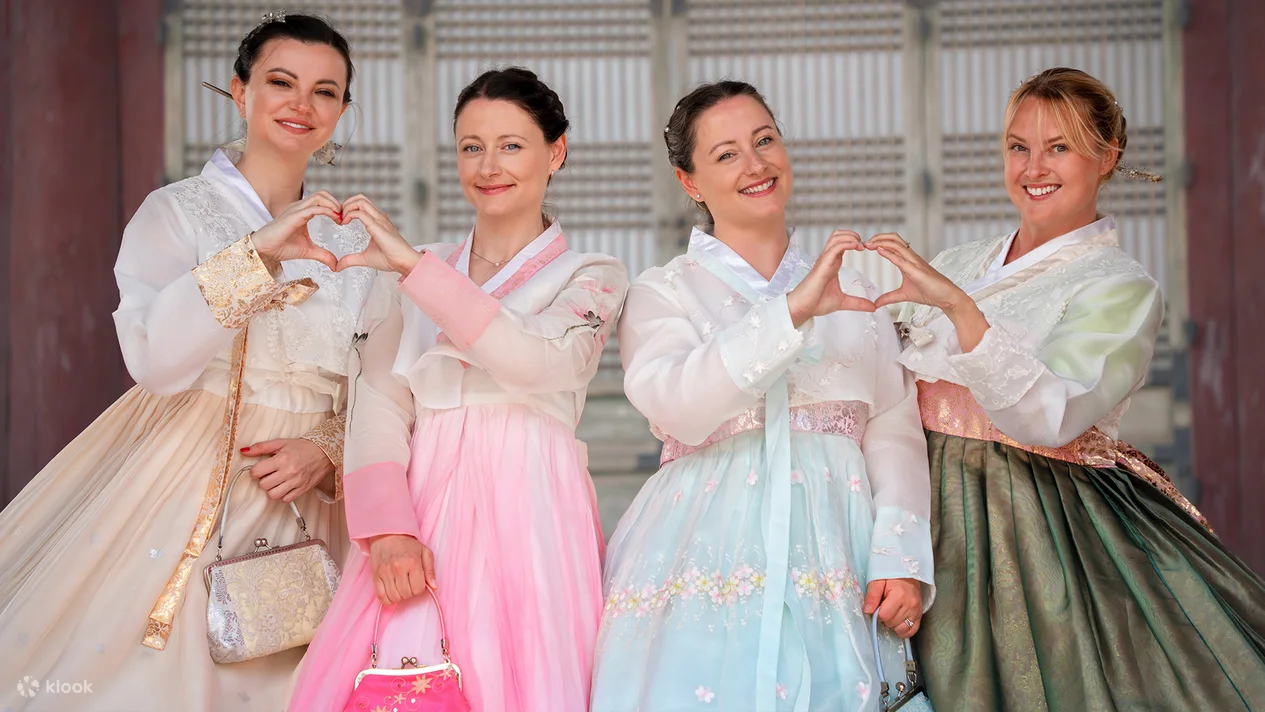
Photo: Traditional Korean Hanbok at a royal palace.
👘Hanbok – Korea’s Traditional Clothing
🌸 What is Hanbok?
Hanbok is Korea's traditional attire, known for its elegant lines, vibrant colors, and symbolic designs. Historically worn daily, it is now reserved for special occasions and cultural events.
✨ Key Features
- Flowing, curved lines that emphasize grace and movement
- Bright natural colors with deep symbolic meanings (e.g., red = passion, blue = hope)
- High-waisted skirts (chima) and cropped jackets (jeogori)
- Gender and age-based variations in design
📜 Cultural Significance
Hanbok reflects Confucian ideals of modesty and beauty. The harmony of structure and color mirrors the balance between human and nature in Korean thought.
🎉 When is Hanbok Worn?
People wear hanbok during traditional holidays like Seollal (Lunar New Year) and Chuseok (Harvest Festival), at weddings, and for cultural performances.
🧵 Modern Adaptations
Hanbok-inspired fashion is now seen in K-pop music videos, international runways, and fusion daily wear. Designers like Danha and Leesle modernize hanbok while honoring tradition.
📍 Where to Try Hanbok
Visitors can rent hanbok near Gyeongbokgung Palace in Seoul and take photos while walking through the historical grounds. Many cities have hanbok experiences for tourists.
🌟 Tips for Wearing Hanbok
- Keep your posture straight to highlight the elegance of the outfit
- Wear minimal accessories – let the fabric shine
- Choose colors that match the season or event
🖼️ Visual Showcase

🎨 Symbols & Fun Facts
- Patterns like peonies, phoenixes, or cranes represent royalty or virtue
- Children’s hanbok often feature the five cardinal colors (오방색) for protection
- Hanbok doesn't use buttons or zippers – it’s tied and folded
💬 Final Thoughts
Hanbok is more than a beautiful outfit – it is a living symbol of Korean identity. Experiencing hanbok firsthand is one of the most memorable ways to connect with Korea’s cultural heritage.
Comments
Post a Comment